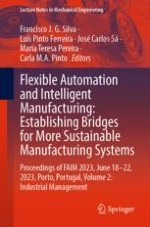This book reports on cutting-edge research and developments in manufacturing, giving a special emphasis to solutions fostering automation, sustainability and health, safety and well-being at work. Topics cover manufacturing process analysis and optimization, supply chain management, quality control, as well as human factors and logistics. They highlight the role and advantages of intelligent systems and technologies, discussing current best-practices and challenges to cope with in the near future. Based on proceedings of the 32nd edition of the International Conference on Flexible Automation and Intelligent Manufacturing, FAIM 2023, held on June 18–22, 2023, in Porto, Portugal, this second volume of a 2-volume set provides academics and professionals with extensive information on innovative strategies for industrial management in the era of industry 5.0.
